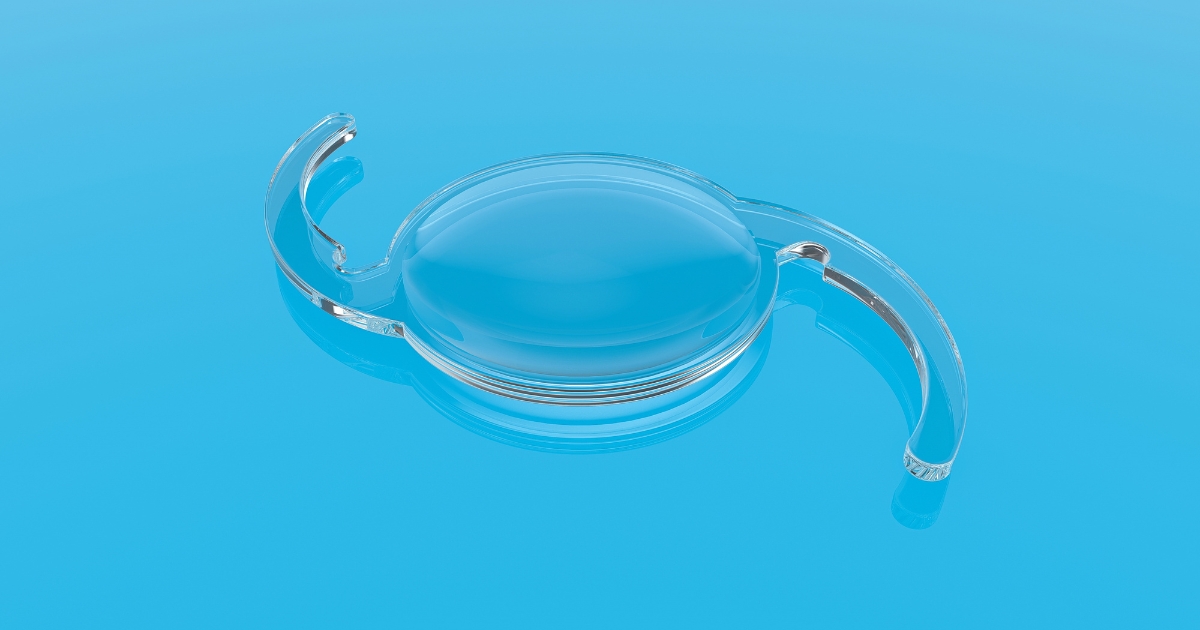Are you scheduled for cataract surgery? Do you need help choosing a lens for your eye? Do you want to avoid regret and make the perfect lens selection? If deciding on the best lens option is important to you, then I am here to help. At the end, I will provide you with four questions that can help you quickly make the lens choice decision that fits your lifestyle and visual expectations. When deciding on an intraocular lens, it is important to consider the following five factors:
1. What’s the near vision quality of the lens? Near vision is the ability to see objects clearly at close range, such as reading a book.
2. What’s the distance vision quality of the lens? Distance vision is the capacity to see objects clearly at a distance, like reading a road sign.
3. What is the dysphotopsia rate associated with the lens? Dysphotopsias are visual disturbances or optical phenomena, such as halos and glare.
4. What is the explantation rate associated with the lens? The explantation rate is the percentage of lens implants that are surgically removed due to complications or significant visual dissatisfaction.
5. What is the out-of-pocket cost for the lens? This is the expense for the lens that insurance does not cover. Based on public research and my clinical experience, I will rate the near and distance vision quality using the following scale: very poor, poor, fair, good, very good, or excellent.
The standard lens is a monofocal intraocular lens, also referred to as the monofocal IOL. Monofocal IOLs have a single fixed focus point, typically set for distance. Patients with monofocal IOLs usually require reading glasses or bifocals for near-vision tasks. Some patients choose monofocal IOLs set at intermediate distances to reduce the need for glasses when using computers or reading at arm’s length. Near Vision: Very poor to poor. Distance Vision: Excellent. Dysphotopsia: Dysphotopsias are relatively uncommon, occurring in about 5–10%. Explantation Rate: Relatively low at 1–2%. Out-of-Pocket Cost: Typically covered by insurance, with minimal cost to the patient.
Monovision is a technique where one eye receives a lens set for distance vision, and the other eye is set for near vision. This approach can reduce the need for glasses for both distance and near tasks but may affect depth perception. For patients considering monovision, I recommend trying it first with contact lenses to ensure it’s the right choice. Near Vision: Good to excellent. Distance Vision: Excellent. Dysphotopsia: Similar to monofocal IOLs, around 5–10%. Explantation Rate: Slightly higher than regular monofocal lenses, about 2–3%. Out-of-Pocket Cost: Similar to monofocal lenses.
Toric IOLs are designed for patients with astigmatism. They correct both cataracts and astigmatism, improving distance vision without glasses. Near Vision: Poor to fair unless combined with other strategies. Distance Vision: Excellent. Dysphotopsia: Similar to monofocal lenses. Explantation Rate: Around 2–4%, sometimes due to lens rotation. Out-of-Pocket Cost: Approximately $1,000–$2,500 per eye.
Accommodating IOLs mimic the flexibility of the natural human lens. They reduce the need for glasses but may not eliminate it entirely. Near Vision: Fair to very good. Distance Vision: Excellent. Dysphotopsia: Estimated at 5–15%. Explantation Rate: Around 2–4%. Out-of-Pocket Cost: $1,500–$3,000 per eye.
Multifocal IOLs provide clear vision at near, intermediate, and far distances, reducing dependence on glasses. Some patients may experience halos or glare, especially in low-light conditions. Near Vision: Good to excellent. Distance Vision: Good to excellent. Dysphotopsia: Higher rates, reported at 10–30%. Explantation Rate: 5–10% due to dissatisfaction or visual disturbances. Out-of-Pocket Cost: $1,500–$3,000 per eye.
Extended Depth of Focus (EDOF) Lenses offer an extended range of vision, emphasizing intermediate tasks like computer use. Near Vision: Very good to excellent. Distance Vision: Very good to excellent. Dysphotopsia: Less than multifocals, around 10–20%. Explantation Rate: 3–6%. Out-of-Pocket Cost: $1,500–$3,000 per eye.
Light Adjustable Lenses are photosensitive and can be adjusted after surgery to optimize vision. These are excellent for eyes with prior refractive surgery like LASIK or PRK. Near Vision: Fair to excellent, depending on adjustments. Distance Vision: Excellent if set for distance. Dysphotopsia: Comparable to monofocal lenses. Explantation Rate: Around 1–3%. Out-of-Pocket Cost: $1,500–$3,500 per eye.
For most patients, the best overall value is the standard monofocal lens. It is covered by insurance and offers excellent distance vision. However, if you have astigmatism, the toric lens is an excellent choice for improved visual clarity. For those who desire minimal dependence on glasses and don’t mind potential visual disturbances, premium lenses like multifocal or EDOF lenses may be worth considering.
To simplify your decision, ask yourself these four questions:
1. Do you mind wearing glasses? If no, a monofocal lens is recommended.
2. Do you have the budget for premium lenses? If no, choose a monofocal lens.
3. Do you have astigmatism greater than two diopters? If yes, consider toric lenses.
4. Do you mind slightly blurred vision, halos, or glare? If no, premium lenses like multifocal or EDOF may suit you.
If I were to have cataract surgery, I would choose the monofocal lens for the clearest vision possible. Since I don’t mind wearing reading glasses, I would allocate the money saved on premium lenses to other projects, like creating more YouTube videos for you. Please share your comments and questions below. If you found this information helpful, don’t forget to share and subscribe.


Leave a Reply